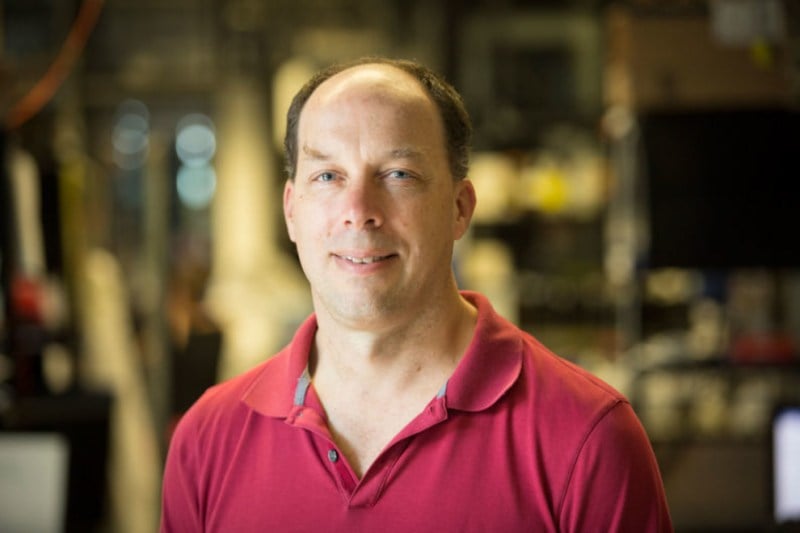Applications opened this month for researchers at Stanford and two other local universities to join the Chan Zuckerberg Biohub, a new interdisciplinary biomedical research initiative founded with a $600 million investment from the philanthropic foundation of Facebook creator Mark Zuckerberg and his wife Priscilla Chan, a pediatrician.
The Biohub will bring together scientists and engineers from Stanford, UC Berkeley and UC San Francisco for five-year appointments. It will funnel resources toward exploratory work, emphasizing foundational science and biotechnology research as part of Chan and Zuckerberg’s goal to “cure, prevent and manage all diseases” within the couple’s young daughter’s lifetime.
“We’re going to focus on… tool and technology development in biology and medicine,” said Stephen Quake, professor of bioengineering and Lee Otterson Professor in the School of Engineering. “It’s an area that is underfunded and yet historically has driven an enormous amount of discovery.”
Quake will co-lead the Biohub with Joseph DeRisi Ph.D. ’99, a Stanford alum and professor of biochemistry and biophysics at UCSF.
The project is part of a decade-long, $3 billion investment in scientific research announced last month by the Chan Zuckerberg Initiative, which Chan and Zuckerberg founded in 2015. The couple pledged to use the money from 99 percent of their Facebook stock for charitable causes.
The Biohub, an independent research organization, will consist of a headquarters in San Francisco’s Mission Bay district, as well as an outpost at Stanford. Details of the Stanford Biohub are still under discussion.
The Biohub will kick off with two large efforts, dubbed The Infectious Disease Project and The Cell Atlas.
The Infectious Disease Project seeks new ways to treat diseases such as Zika and Ebola through both therapeutics and vaccinations. It also includes a “rapid response team” that will tackle new and pressing outbreaks as they arise.
The Cell Atlas aims to understand and catalogue all important features of the different types of cells in the human body, in both healthy and diseased conditions. In the the process, Quake hopes to understand “what makes these cells tick” — to examine, for example, the differences between a lung cell and a heart cell at an unprecedented level of molecular detail. According to Quake, textbooks often estimate a few hundred different human cell types, but research suggests there could be 10 to 100 times more varieties than previously thought.
Lloyd Minor, dean of the School of Medicine, noted that constraints on the National Institutes of Health’s budget in recent years have cut back government funding for the broad sort of research the Biohub will fund.
“Given that reality, its very important to have these sorts of amazing philanthropic initiatives to make sure that our scientists and engineers are able to do the type of transformative, discovery-based research that underlies future medical advances,” Minor said.
Quake expects the Biohub to employ or fund about 150 people pooled from the three partnering universities. The collaboration invites researchers in a variety of fields, from biology to computer science to mathematics, as well as in a variety of career stages, from well-established scientists to those just finishing their postdoctoral work. A panel will likely make selections by the end of the year, Quake said.
Some specific opportunities at the Biohub aim to nurture young talent, such as a fellowship program that will focus on recent graduates. Some “investigator” positions will be set aside for assistant professors rather than their more senior peers. Finally, “group leader” spots will create an “alternative career path” for scientists who want to focus on research rather than teaching, Quake said.
“It’s become more and more challenging for young faculty to get their groups funded through federal grants,” Quake said. “We’re going to have some money set aside for younger people so they don’t have to compete with senior people more advanced in their careers.”
Quake and Minor were both enthusiastic about the Biohub’s opportunity for close collaboration among Stanford, UC Berkeley and UCSF, which collectively host two medical schools, two engineering schools and three basic science schools.
“There’s an extraordinary concentration of talent here in the Bay Area related, broadly speaking, to biomedicine,” Minor said. “This Biohub provides financial incentives for faculty at the three institutions to come together and… think in a very creative way about how we build the future of medicine.”
Contact Hannah Knowles at hknowles ‘at’ stanford.edu.
